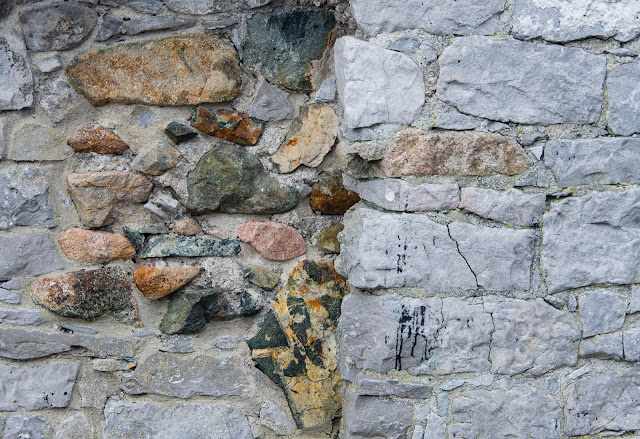IRELAND #4: GALWAY
Galway turned out to be one of our favourite towns. It is a harbour town on the River Corrib, a lively university centre as well as a district court centre, with a city population of 75,000. Part of the medieval town walls are still intact. The town was visited by Christopher Columbus in 1477, and by us in September 2015.
We began our walking tour with a short explanation at the front of our hotel - the Harbour Hotel.
After leading us to Eyre Square (also known as Kennedy Park where JFK spoke in 1963), Peader showed us the interior of a shopping mall which has been built around the original Galway medieval walls including two wall towers. Peader is proud of the preservation work that has become his passion.
I like to shoot patterns and lines. I noticed the skylights in this development while Peader spoke.
We walked down Abbeygate Street to Shop Street where we observed Lynch Castle. It was a fortified house, built by the Lynch family in the 16th century to protect them from raids by neighbouring tribes. Spanish motifs and the Lynch family coat of arms are visible on the stones.

Off Shop Street, I noticed interesting views of the cemetery stones at the back of St. Nicholas' Church.
On Market Street, we observed Lynch's window. According to local legend, Mayor James Lynch Fitzstephen ordered his own son to be hanged from the window of his home in 1493 for murdering a Spanish guest. This is probably the origin of the term "lynching".

I like the colour of this door on the grey stone building off Lombard Street.
Galway's "Latin Quarter" is a zesty commercial area, full of life and excitement. I was fascinated by the historical/political meaning that seems to lie behind the name of the Kings Head Pub. The crossed axes and the portrait of English King Charles I seem to tell a historical story about the King who lost his head.

We lunched in an intimate cafe on the first (2nd) floor looking over the River. The gated doorway captured my attention.
Two interior scenes attracted my camera at lunchtime: pots and cups on a side shelf, and lemons in a window seat overlooking the river.

We walked northward on the Corrib walk beside the river where we saw idyllic scenes that dated back many decades, even centuries.
We came upon the Cathedral of Our Lady Assumed into Heaven and St. Nicholas. Opened in 1965, we found that it is one of the most beautiful cathedrals we have seen, particularly in the interior. Designed essentially in the Renaissance style, the sanctuary floor is of Portuguese marble and the altar rests on a slab of Carrara marble. The stained glass rose window is fabulous. The wood is rich and warm in contrast to the gray stone walls.

The organ has 59 speaking stops spread over three manuals and pedals.
The ceilings are made of Canadian red cedar.
We found a mosaic image of John Kennedy on the wall.
The walkway back to the Latin Quarter presented beautiful scenes and family activities.
The Collegiate Church of St. Nicholas was founded in the 14th century, extended in the 15th and 16th centuries, but then damaged by the Cromwellians in the 17th century during England's Civil Wars.
The interlacing on the celtic cross just inside the front door is captivating.
In the dockyard and the harbour, near our hotel, I found a variety of sailing vessels. This is a navy boat.

I think these are modern examples of the famous traditional fishing boats called "Galway Hookers".
This ferry goes to the Aran Islands.
This is a reflection of a pleasure craft. (I like to shoot reflections!)










































1 Comments:
Beautiful photos, Dad! I used to buy nylons for work in that shopping mall. I'm glad Galway was one of your favourite places - it's mine too!
Post a Comment
Subscribe to Post Comments [Atom]
<< Home